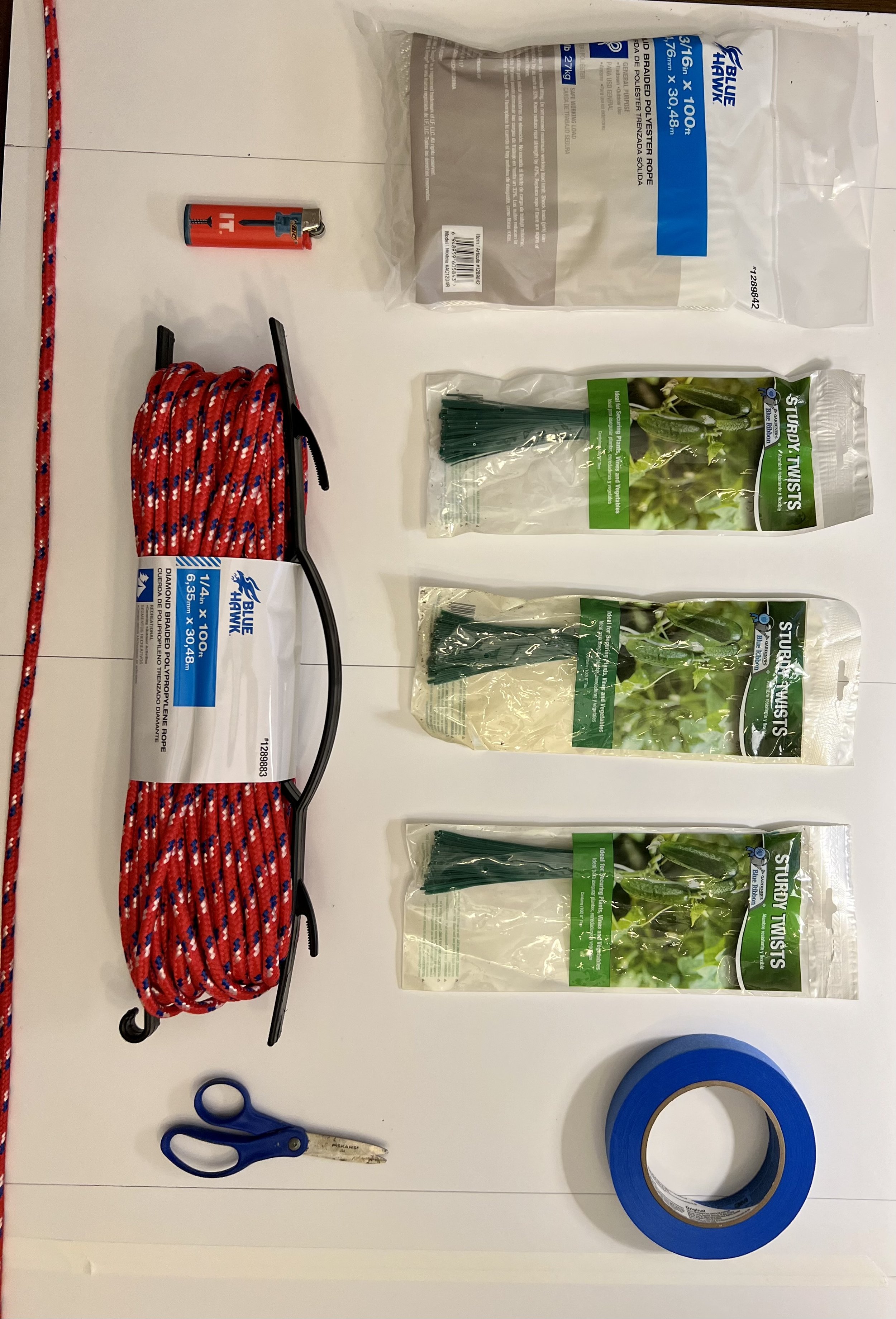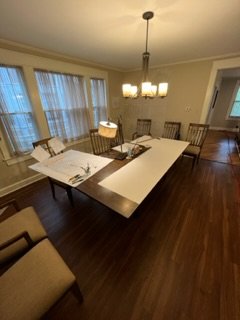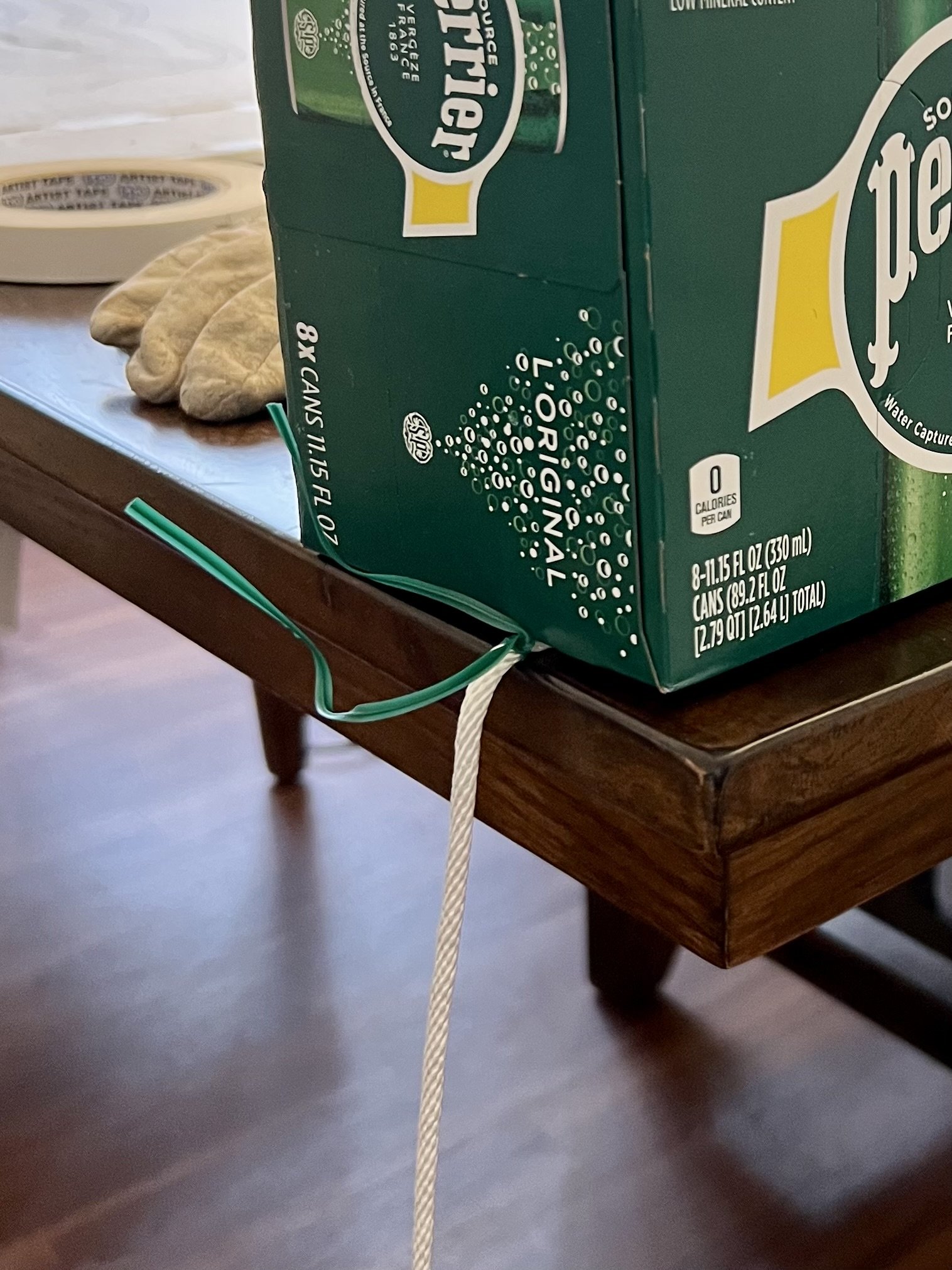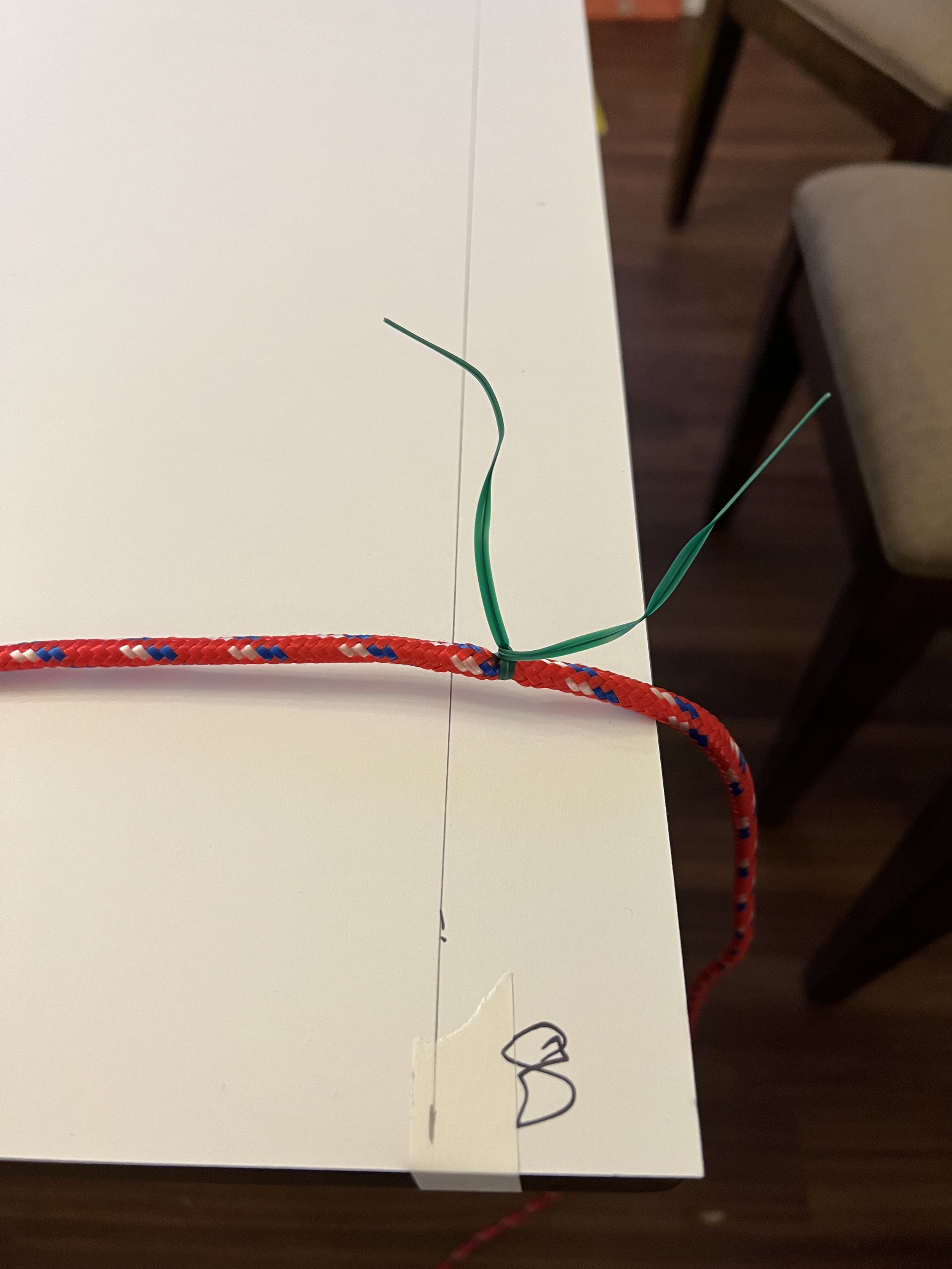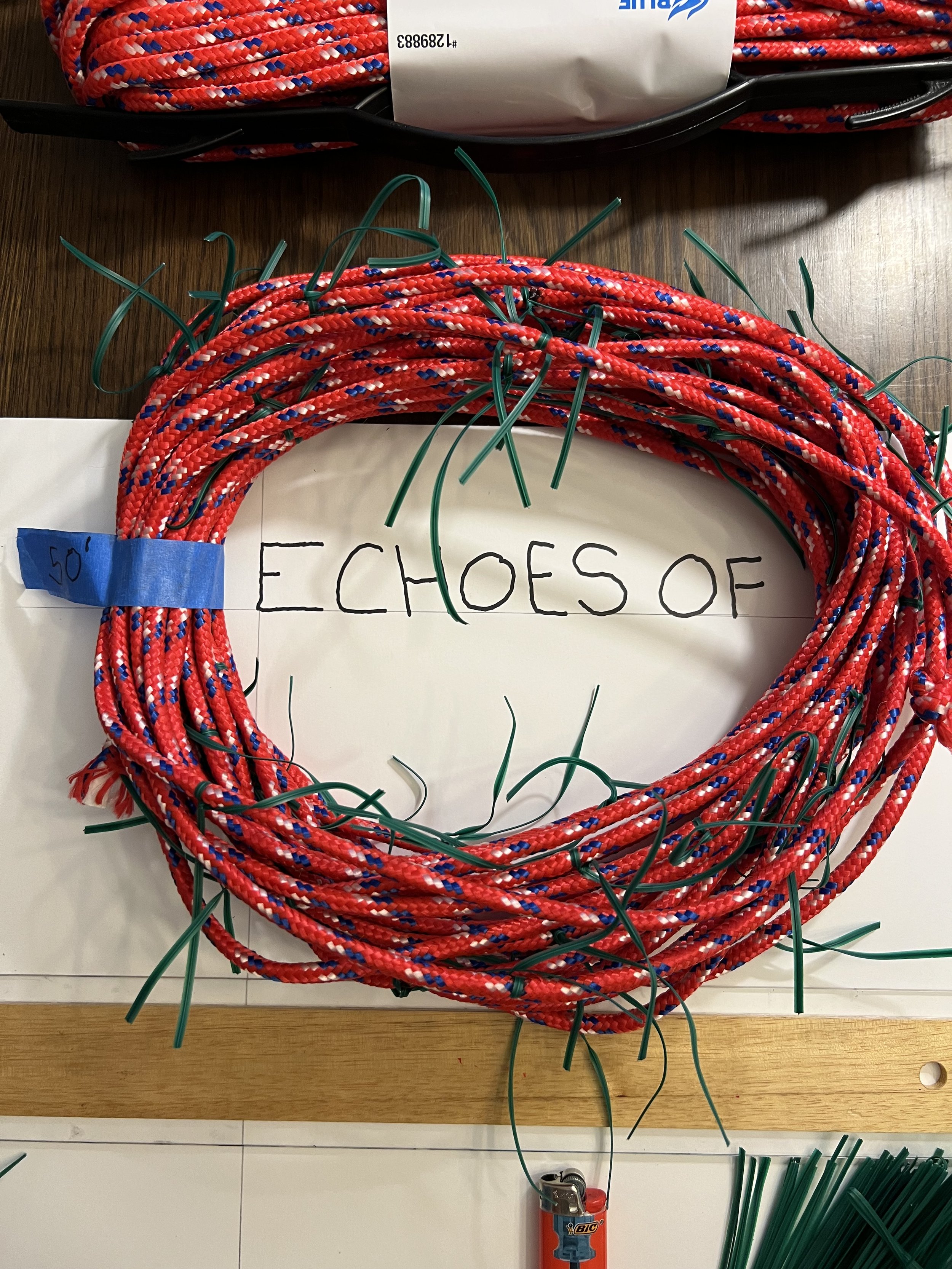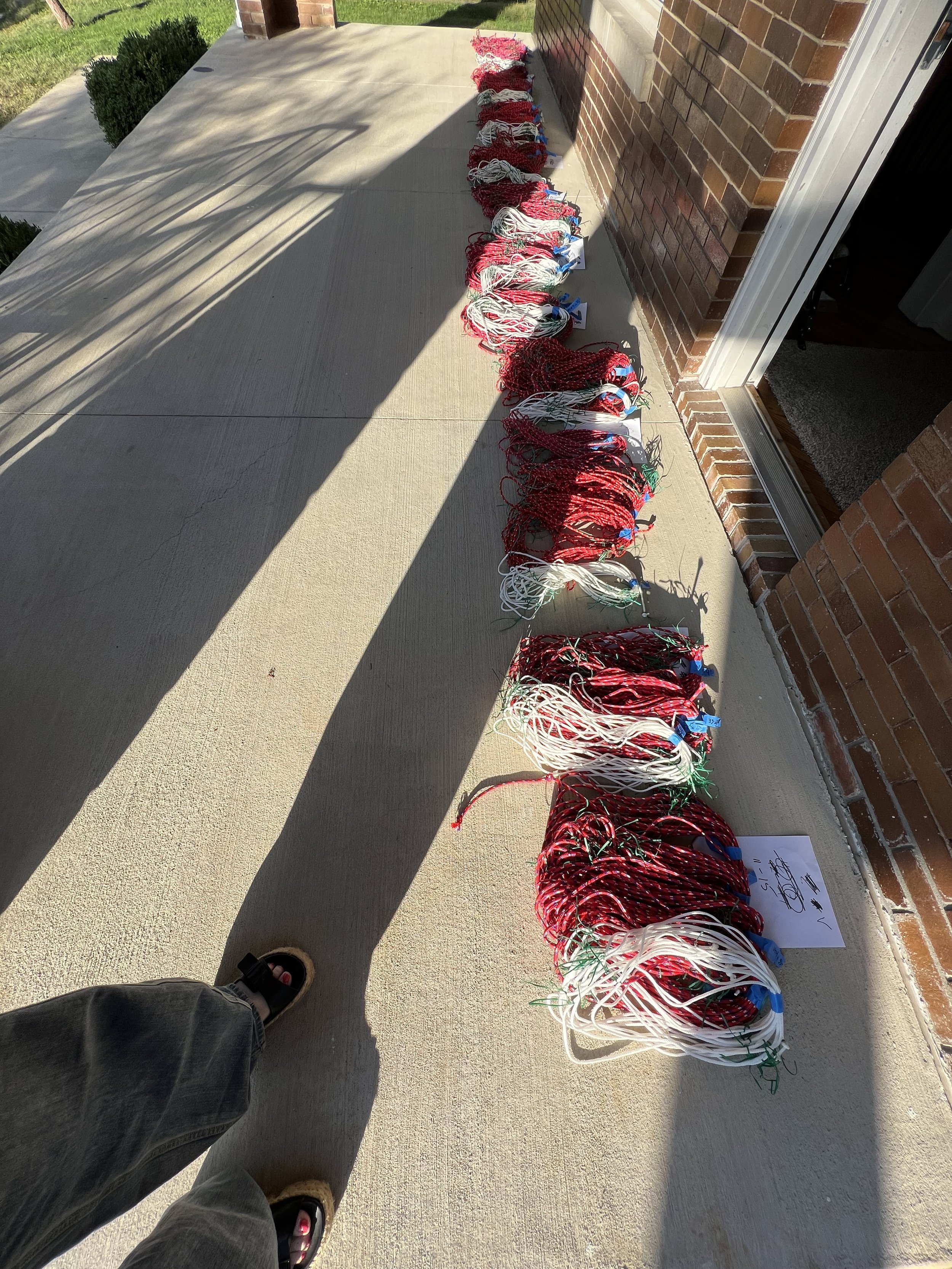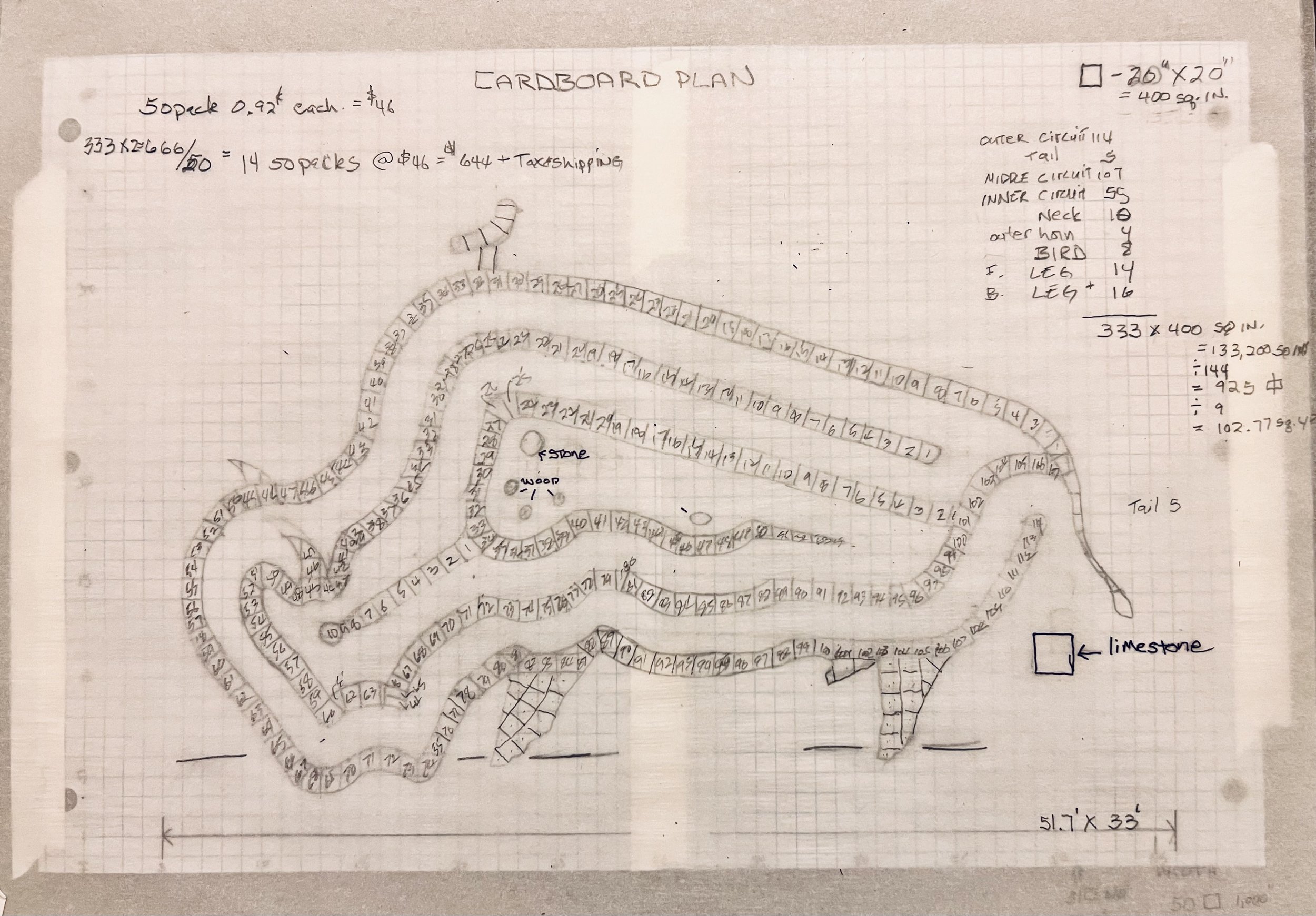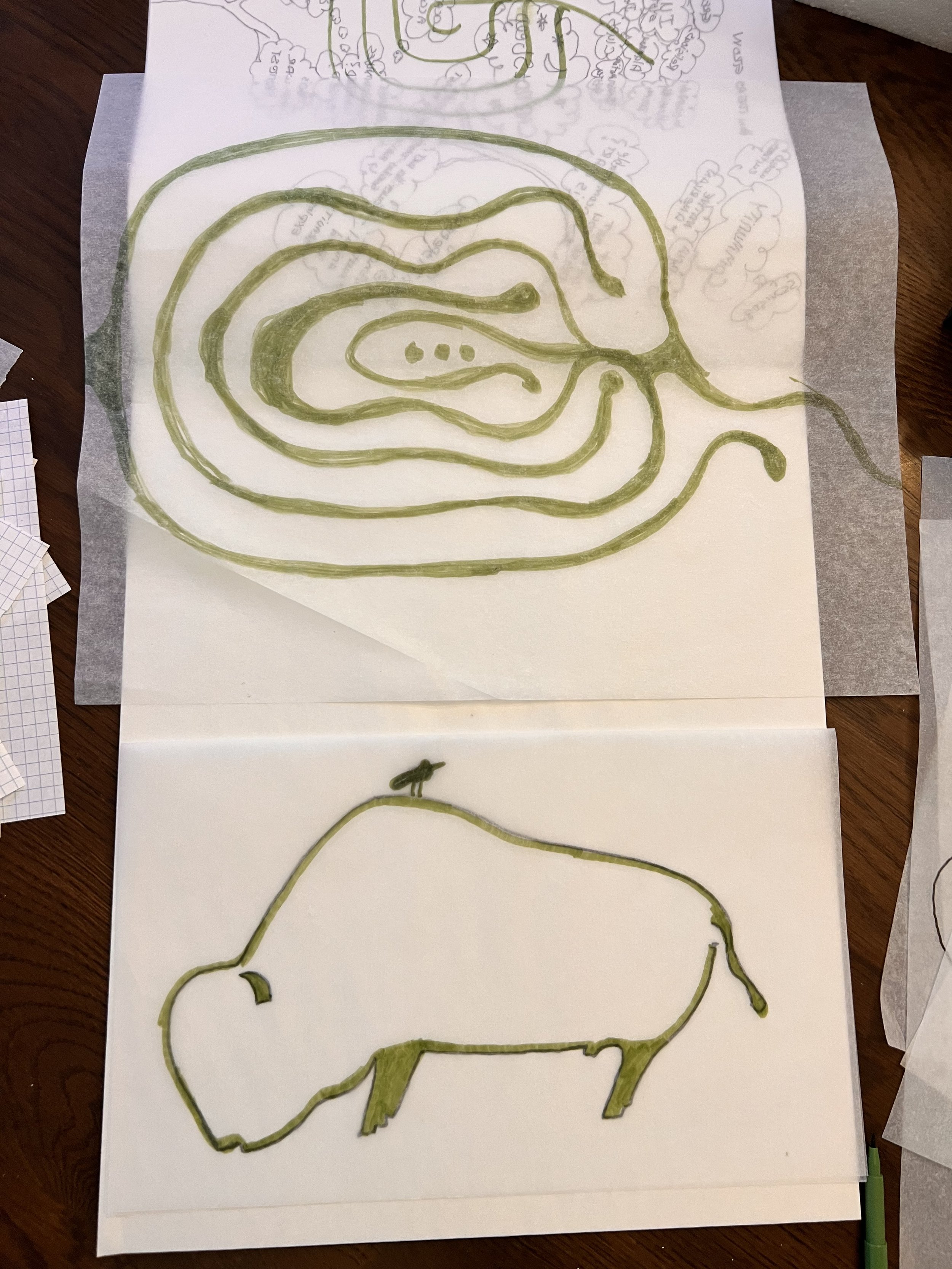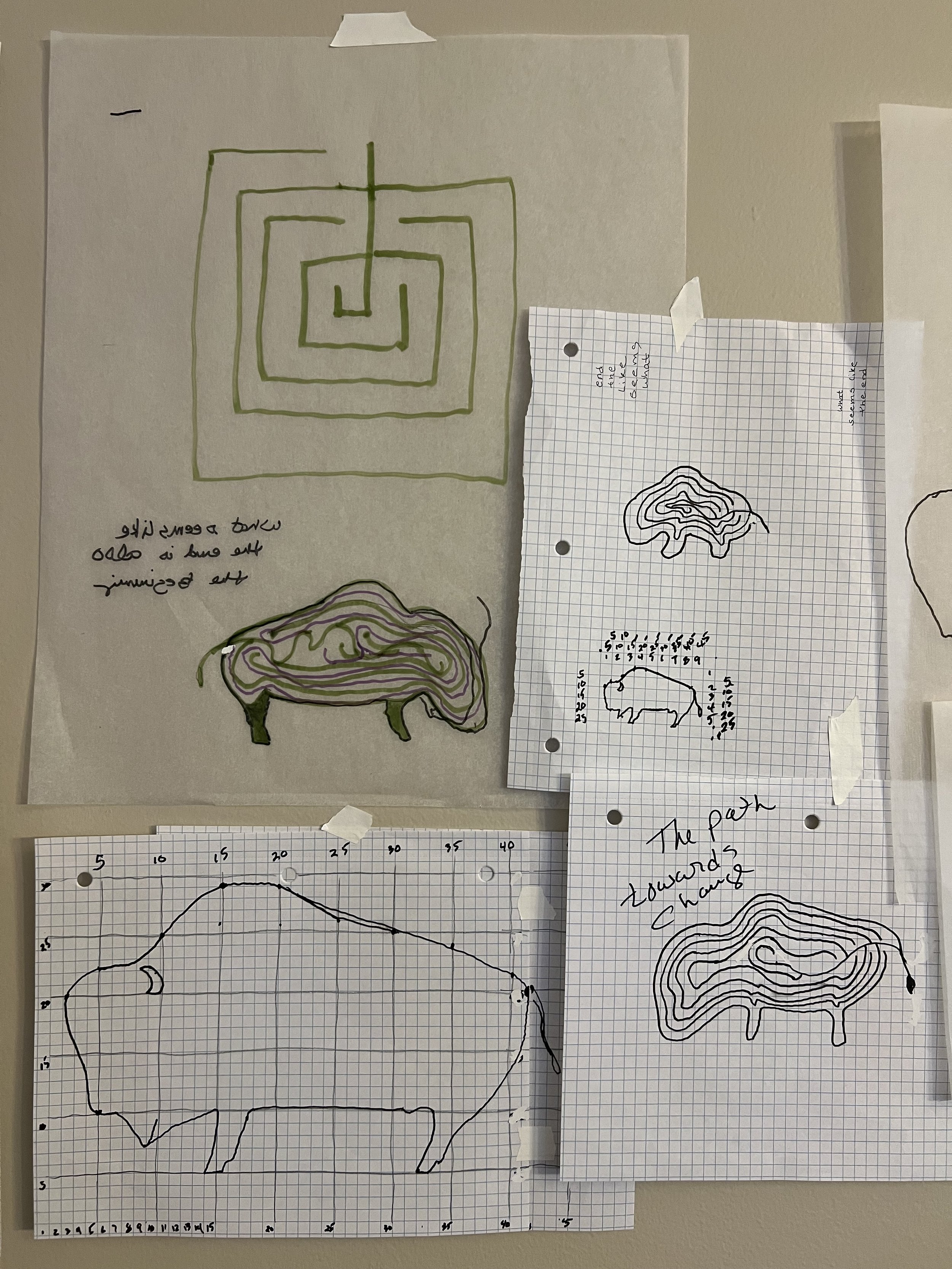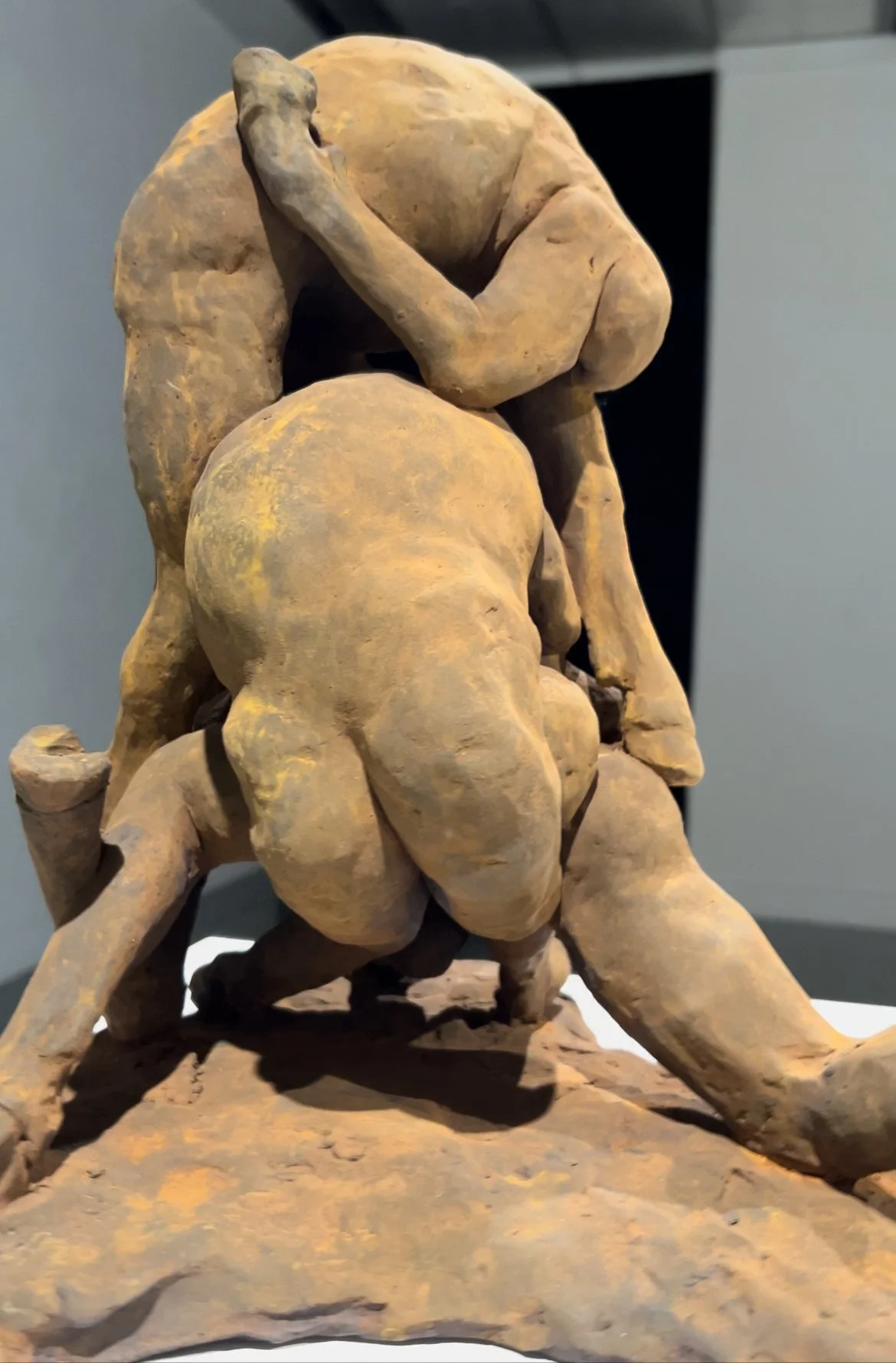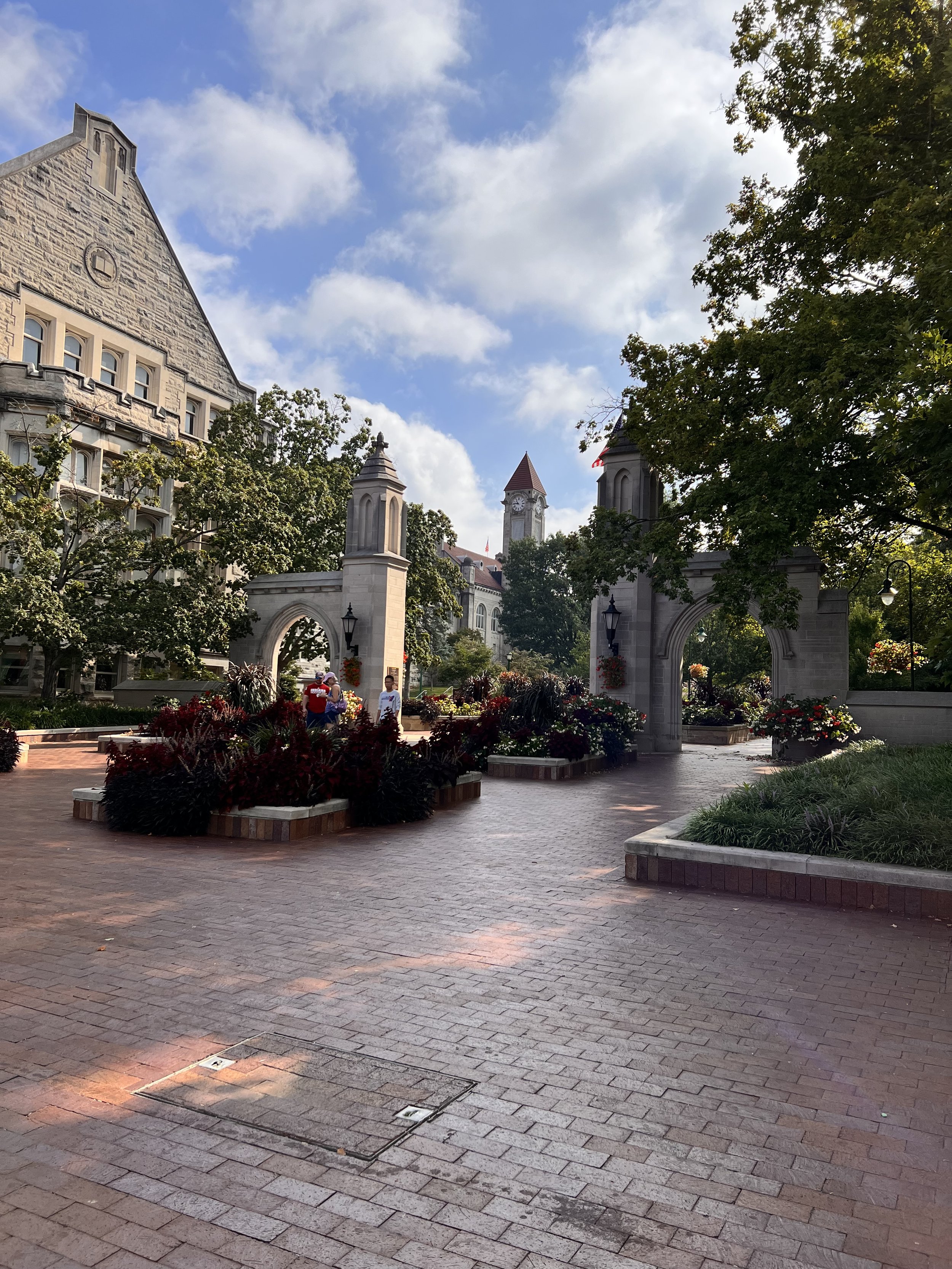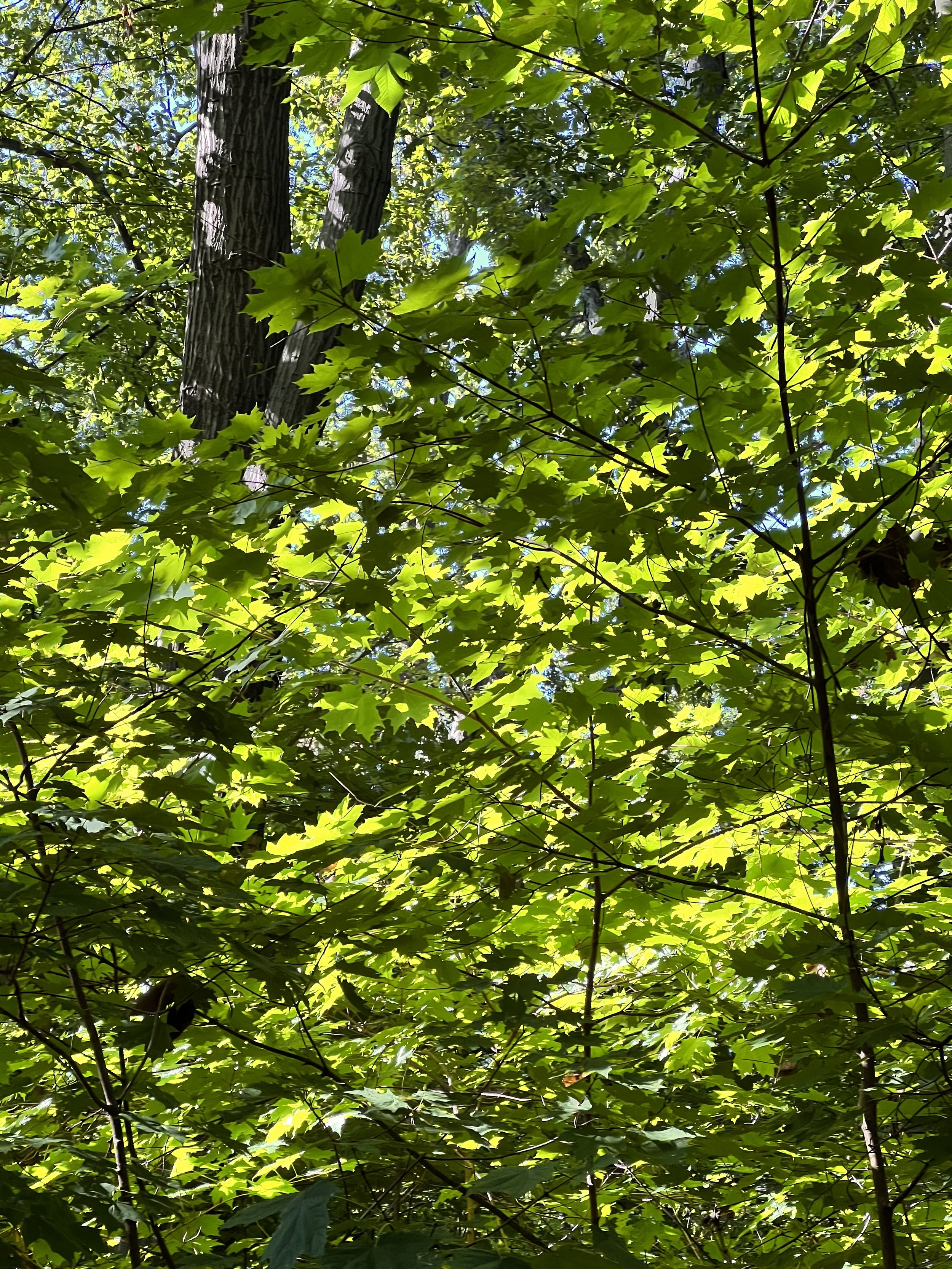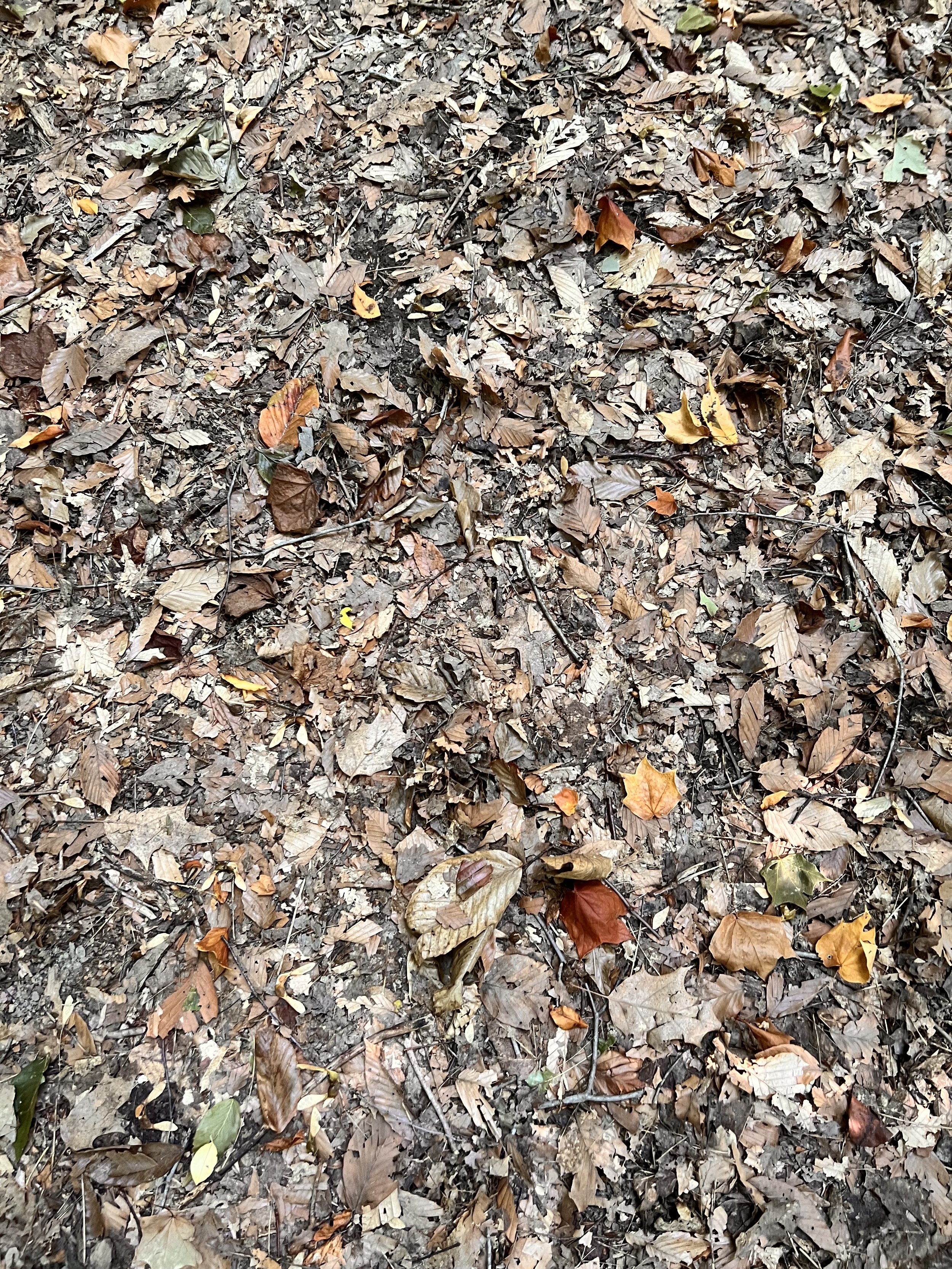I am slowly working to find solutions to the problems that will arise when the students implement the installation.
First, how to get students that are not comfortable with nature to want tobe involved. What will draw them in?
Second, a big problem is how to control a group of college kids in a field and have them complete a detailed installation.
Bloomington is a walking city. Every day as I would walk about town and the campus I worried about how I was going to solve these two problem. And like on most college campuses everyone is in their own audio visual world contained between the ear pieces of a headset. And I was the same. The difference was I still wanted to connect to those passing by me with a “good morning” or hi. I found the IU students were very focused on the sounds in their headsets they did not need to make eye contact or say hello.
In a discussion with an English professor, Shannon Gayk, who also teaches a walking class, I learned that a novel idea for students is silent walking. The idea of walking without a headset without sound — silent.
Thinking of headsets and silent - my mind went straight to silent raves then to a silent installation.
Would the concept of a silent installation draw the students in. Could this commitment to headsets be a possible tool for crowd control during the installation?
I love the idea. But that leads to another hurdle. How do I design a silent installation? What technology makes this possible?
With a quick Google search, I found several companies that provide everything you need for a silent event.





